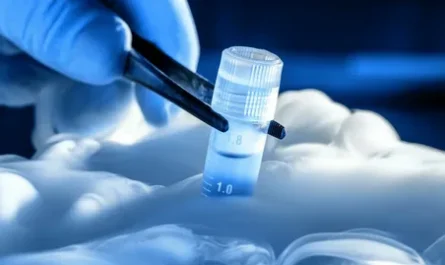Cell cryopreservation refers to the process of freezing and storing cells at extremely low temperatures, usually with liquid nitrogen. At such low temperatures, any biological activity, including cell division and metabolic processes, essentially stops. This allows cells to be stored indefinitely for future use, without deteriorating. Over the past few decades, cell cryopreservation has emerged as an important area in medicine, advancing fields such as fertility treatment, organ transplantation and regenerative medicine.
History of Cryopreservation
The first successful Cell cryopreservation of cells was demonstrated in 1949 by Polge, Smith and Parkes, who froze boar sperm and used it later to successfully fertilize pigs. This paved way for more research in this area. In the 1970s, researchers achieved success in freezing unfertilized human eggs as well as embryos. This helped advance in-vitro fertilization methods. Martin et al. achieved the first successful cryopreservation of human red blood cells in 1980. By the 1990s, researchers were able to freeze various other types of human cells including stem cells. Today, cell cryopreservation is routinely used for freezing sperm, eggs, embryos and stem cells.
Applications in Reproductive Medicine
Cell cryopreservation finds major applications in the field of reproductive medicine and fertility treatment. Sperm banks widely use cryopreservation to store sperm samples from donors for fertilizing eggs in the future via artificial insemination or IVF. Men undergoing cancer treatments that could damage sperm production also routinely freeze their sperm before therapy, for fertility restoration later. Women facing risks to fertility from cancer treatment or other conditions likewise freeze their eggs for future use. Embryo freezing following IVF allows women to delay pregnancy and have children later in life. This has helped many achieve pregnancy success even after the natural fertility window has passed.
Uses in Organ Transplantation
Cell cryopreservation is crucial in organ and tissue transplantation as well. Stem cells from bone marrow, cord blood or peripheral blood can be frozen and stored for future use in transplantations. This is especially useful for patients requiring stem cell transplants for conditions like leukemia. Cord blood banking also allows cryopreservation and storage of umbilical cord blood stem cells at birth, which can treat over 80 diseases if the child or a family member requires it later in life. Certain cells and tissues used in transplantation such as heart valves, corneas and skin can also be preserved through cryopreservation for extended shelf life and on-demand use later.
Applications in Regenerative Medicine
Regenerative medicine employs various cell-based therapies and tissue engineering techniques to replace or regenerate damaged cells, tissues and organs. Cell cryopreservation plays an important role here. Stem cells from sources like adipose tissue, dental pulp or amniotic fluid can be frozen and banked for future therapeutic use when required. Companies are developing advanced stem cell therapies for treating conditions like Parkinson’s disease, diabetes, heart disease, spinal cord injury and more. Cryopreservation allows large-scale harvesting and storage of viable stem cells needed for regenerative therapies on a wider scale. Researchers have also devised methods to cryopreserve tissues and organ buds that could potentially replace organ transplants in future.
Challenges and Advancements
While cell cryopreservation has revolutionized many areas of medicine, some key challenges remain. Freeze-thaw cycles can damage cell membranes and structures. Not all cell types survive freezing and thawing with equal efficiency. Development of improved cryoprotectant solutions aims to minimize such cell injury during freezing and storage at low temperatures. Newer vitrification techniques cool cells extremely rapidly, avoiding ice crystal formation inside cells. This helps achieve higher post-thaw cell viability. Automating freezing protocols through robotic systems can enhance accuracy and reproducibility. Long-term effects of cryopreservation like epigenetic changes in cells are also being studied. Overall, ongoing research continues advancing cryopreservation to successfully freeze and store a wider range of cell types including ones that are challenging to freeze, with minimal damage for optimal clinical outcomes.
Cell cryopreservation has emerged as a transformative technology not just in medicine but in biobanking as well. It allows indefinite storage and preservation of cells and tissues at ultra-low temperatures for future therapeutic applications. Stem cell cryopreservation is further advancing fields like regenerative medicine. Continued innovation in cryopreservation science and technologies will help maximize cell survival after freezing and thawing, expanding its benefits across various clinical applications. Proper regulations and quality standards are also essential to ensure safety and efficacy as this area evolves to deliver improved patient care through advanced cell therapies.


